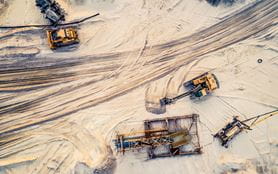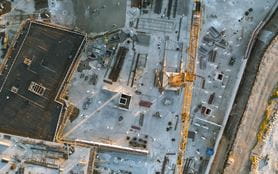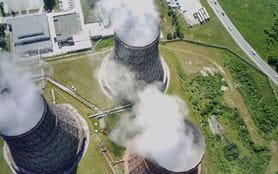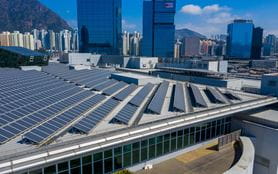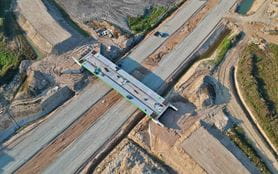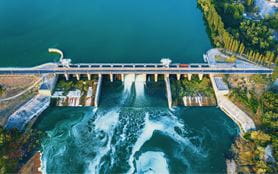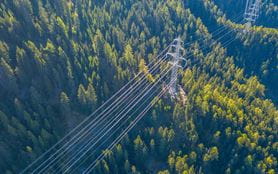Long-overdue reform of U.S. interconnection rules set to boost renewable power
Related people
Headlines in this article
The existing U.S. interconnection regime is decades old and ill-equipped to bring large amounts of new renewable power on to the grid. Thankfully that looks set to change.
The transition of the U.S. power sector to increasing reliance on low- or zero-carbon resources requires the interconnection of large amounts of new, clean generation.
However, in many areas, it typically takes years to perform the required system impact studies before a generator can enter into an interconnection agreement with the local transmission owner or operator.
One of the most pressing issues facing the sector therefore is how best to reform the interconnection queue and resolve the perennial backlog of generation attempting to access the nation’s transmission grid.
Current regime unchanged in two decades
The current interconnection regime is almost two decades old. It was established by the Federal Energy Regulatory Commission (FERC) in the wake of FERC’s introduction of competition to the wholesale power markets by mandating “open access” to the transmission system.
As renewable electricity generation has expanded in the U.S., the FERC regime has buckled under the weight of applications from a multitude of smaller, largely renewable projects.
At that time, FERC was focused on facilitating the development of competition in an era where largely natural-gas-fired generation was coming online. FERC developed a first-come, first-served interconnection regime, under which each generator that applied for interconnection was studied by the transmission provider in sequence.
Each generator was also responsible for funding the full cost of upgrades to the transmission system needed to accommodate its facility. This mechanism was well suited to a relatively limited number of large, expensive conventional generators.
System buckles under weight of applications
As renewable generation has expanded, the system has buckled under the weight of applications from a multitude of smaller, largely renewable, projects, the bulk of which are never completed.
For example, PJM Interconnection, L.L.C., the independent grid operator in the mid-Atlantic region and a portion of the Midwest, has seen requests for generator interconnections triple over the past three years. There are now 2,700 projects (more than 250GW) in the queue, with generators facing multi-year delays to enter the network.
Moreover, the allocation of upgrade costs has become increasingly uncertain. Project developers often jockey to take advantage of available transmission system capacity, with those just behind them in the queue potentially saddled with the costs of large upgrades that benefit multiple parties.
Cost uncertainty causes developers to withdraw
The unpredictability of costs compounds the problem, with projects pulling out of the queue. This leads to re-studies for all lower-queued projects, a reallocation of costs and further withdrawals.
Another issue is that joining, and remaining in, the interconnection queue is relatively inexpensive, resulting in some developers submitting multiple speculative projects, some or all of which will never enter operation.
Several grid operators in the U.S. have already made changes to their respective interconnection processes by adopting a first-ready/first-served model and a cluster study process. Under this regime, all of the interconnection applications submitted within a certain period, referred to as a “cluster”, are studied as a group.
Transmission system upgrade costs are allocated among members of the cluster based on their proportional impact of the proposed interconnections on the system.
In 2022, FERC issued a notice of proposed rulemaking setting out a plan to revise its pro forma interconnection procedures. The earliest date for an order is likely to be spring 2023.
There is generally a series of three studies – after each round, the applicants may choose to withdraw from the queue if the allocated costs are too high for their project.
They may also be removed from the queue if they have not passed certain development milestones, such as securing site control. Applicants that continue in the queue must pay deposits (generally based on project size and/or system impact), which are intended to winnow out projects that are merely speculative.
FERC proposes new interconnection regime
In the summer of 2022, FERC issued a notice of proposed rulemaking setting out a plan to revise its pro forma interconnection procedures, which would apply across the U.S. In the same week, PJM independently proposed similar revisions to its own interconnection queue procedures.
Any final order from FERC will affect transmission owners nationwide, although large independent grid operators such as PJM are granted leeway to develop their own rules.
The earliest date for an order is likely to be spring 2023, and even once new interconnection processes are in place, it will take time to implement them and clear the backlogs.
FERC’s order will be designed to do two key things: give project developers greater cost and timing certainty throughout the interconnection process, and eliminate current queue clogging. This improved certainty should facilitate the ability of low- and zero-carbon generation gaining access to the grid more efficiently.
Project developers will need to ensure compliance with the new interconnection regimes. To prepare for the changes that are coming, the best thing that project developers – as well as investors looking at generation projects in the development cycle – can do is to get to know the rules inside and out.
The more familiar they are with the new measures, the less likely they will be to fall foul of them.





